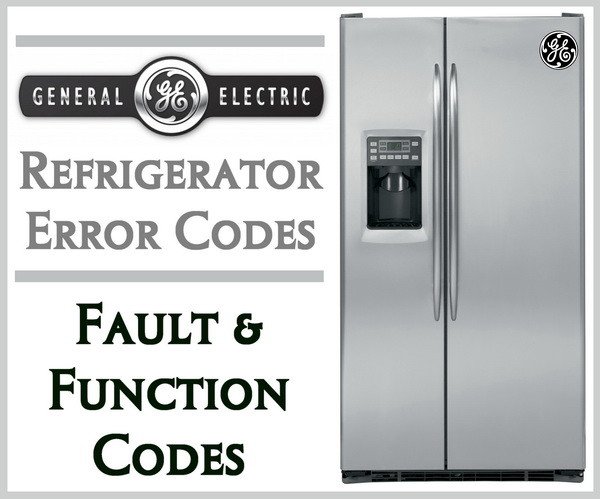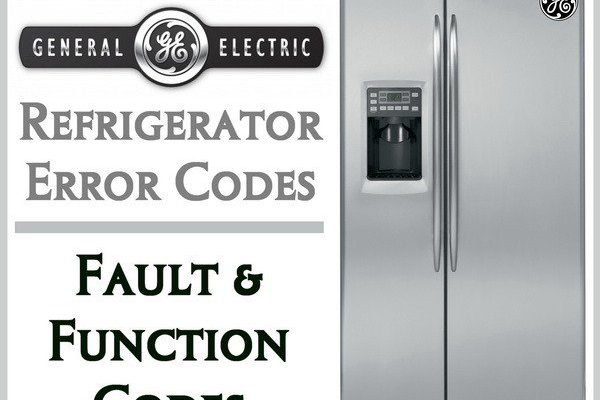
You know that moment when you see an error code flashing on your refrigerator and wonder if it’s really a big deal? Well, that’s the scenario many face with the GE Refrigerator Error F2. If you’re anything like most folks, your first reaction might be to ignore it and hope it goes away. But here’s the deal: ignoring this error might not be the best idea. Let’s break down what this error code means and what could happen if you don’t take action.
At its core, the Error F2 on a GE refrigerator is a signal that something isn’t quite right with the appliance. It’s like your fridge is waving a little red flag, trying to get your attention. This error is often related to the evaporator fan or its motor, which plays a crucial role in keeping your fridge at just the right temperature. Ever notice how a broken fan can lead to overheating? It’s the same concept here; if this fan fails, your fridge might struggle to maintain its cool, impacting the freshness of your food.
The Importance of the Evaporator Fan
So, why is this fan so important? Think of your refrigerator’s cooling system as a mini version of your home’s air conditioning. Just like an AC unit, your fridge relies on a consistent airflow to keep things cool. The evaporator fan is responsible for circulating cold air throughout the fridge compartment. Without it, you’d experience uneven cooling, much like sitting in a room where the AC only works on one side.
When the evaporator fan isn’t functioning correctly, some areas of your fridge may become too warm. This can lead to food spoilage, which is not only wasteful but can be costly if you regularly stock up on fresh produce or meats. Plus, if you’re opening the fridge often, you’re letting out whatever cold air remains, causing the fridge to work even harder to bring temperatures back down. Over time, this can lead to increased wear and tear on other components and even higher energy bills.
If left unfixed, you might find yourself dealing with a fridge that can’t keep items cold enough to be safe for consumption. This is akin to having a clogged faucet where the water barely trickles out; while you might get a drop or two, the system just can’t function as intended. Addressing this error by inspecting the fan and potentially replacing it can save you from bigger headaches down the line.
Consequences of Ignoring Error F2
You might be wondering, “Is it really that serious?” Well, ignoring Error F2 can lead to several issues. First, there’s the risk of food spoilage. Without proper cooling, even things like milk and cheese can spoil faster, leading to not only a sour fridge smell but also wasted money. Imagine buying a gallon of your favorite ice cream only to find it melted into a sad puddle—definitely not fun.
Next, there’s the stress placed on your refrigerator’s compressor. The harder your fridge has to work to maintain cool temperatures, the more strain it puts on this critical component. Think of the compressor as the heart of your fridge; if it wears out from overuse, you’re in for a costly repair or replacement. Ignoring the F2 error is like ignoring an oil change light on your car dashboard. Sure, the car might still run for a while, but you’re risking significant damage in the long run.
Lastly, there’s the potential for permanent damage to your appliance. Continuous operation under faulty conditions can shorten the lifespan of your fridge. Repairing small issues like an evaporator fan is much cheaper and simpler than replacing the whole refrigerator. So, while it might seem like a hassle now, addressing the error can extend your fridge’s life and save money.
What You Can Do to Fix GE Refrigerators Error F2
So, what can you do if you’re staring down that Error F2 code? First, don’t panic. You can take several steps before calling in a professional, particularly if you’re up for a bit of DIY. Start by unplugging the fridge to ensure your safety as you inspect the problem.
Next, locate the evaporator fan behind the rear panel inside the refrigerator. If you’re comfortable, check for any obstructions or obvious signs of wear. Often, something simple, like a piece of packaging, might be blocking the fan. If the fan appears damaged or doesn’t spin freely, it might need replacing. This task is manageable for those with some DIY experience, but remember, it’s always okay to call a professional if you’re unsure.
As you tackle this issue, consider setting aside a cleaning schedule for your fridge. Regular maintenance, like checking for frost build-up or ensuring vents aren’t blocked, can prevent many problems before they start. It’s similar to how regular dental check-ups keep your teeth healthy—small steps lead to big benefits over time.
Preventative Tips for a Happy, Healthy Refrigerator
Prevention, as they say, is better than cure. Keeping your fridge in tip-top shape can help prevent errors like F2 from cropping up. Start by ensuring there’s enough space inside the fridge for air to circulate. Overpacking can block vents, similar to how a crowded room feels stuffy.
Regularly clean your refrigerator’s coils, typically located on the back or beneath the unit. Dust and debris can accumulate over time, making the fridge less efficient. Just like cleaning out a gutter to prevent water damage, maintaining these coils helps your fridge run smoothly.
Lastly, keep an ear out for unusual noises. Often, changes in the sound your fridge makes can hint at underlying issues. Just like how a car engine’s odd noise warns you of a needed tune-up, your fridge might be trying to tell you something. Stay proactive, and your refrigerator will reward you with years of reliable service.
Here’s hoping this guide gave you a clearer picture of why addressing the F2 error in your GE refrigerator is so important. By understanding the role of the evaporator fan and the potential consequences of neglect, you’re better equipped to take action. Remember, a little attention now can save a lot of hassle (and cash) later on.
